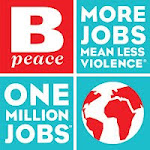 I continue to be amazed at the speed which the world is moving towards alternative energy. (And equally frustrated at the lack of data showing this — just checked the World Bank numbers to see if they’ve updated them since the beginning of the year. Nope. Can’t wait till January till I can update the numbers!) I know, I know, you’re hearing lots and lots about fracking and shale gas, tar sands, giant coal reserves just found in north-western Mozambique, and then more about fracking and shale gas.
I continue to be amazed at the speed which the world is moving towards alternative energy. (And equally frustrated at the lack of data showing this — just checked the World Bank numbers to see if they’ve updated them since the beginning of the year. Nope. Can’t wait till January till I can update the numbers!) I know, I know, you’re hearing lots and lots about fracking and shale gas, tar sands, giant coal reserves just found in north-western Mozambique, and then more about fracking and shale gas.
But the future of energy will not be in one direction but will be in hundreds. All at once. Kind of crazy but true.
One of those might just be this: Liquid air ‘offers energy storage hope‘. And then this: Petrol from air: Will it make a difference? One story tells how a guy in his garage in the U.K. has demonstrated a viable way to store power by super-cooling air, which can then be compressed into tanks and released later to power turbines. Sounds nuts, but it actually works. It involves removing the carbon from the air so it is mostly nitrogen (which air is anyway) which brings me to the second story which involves combining the carbon pulled out of air with water to create a petroleum product. So if these two get together, we’ll literally be able to pull energy out of air. (And does this mean, we could “mine” the smog around Delhi and Beijing for carbon?!)
We’re already looking at pulling energy out of dirty water — US researchers build ‘waste water generator’ — so why not air?
But my favorite alternative energy source (which the Komai team featured recently on their blog and I’m linking to here — thanks, Komai!) is this: Tiger Energy. The source, parents across the planet can confirm, is probably inexhaustible.
What other innovations haven’t we even heard about are coming soon?!
Thanks for stopping by,
Heather McC
PS. The tiny island of Tokelau has just completed a shift from almost total reliance on diesel power to meeting 100% of its electricity needs with solar. This seems to be a trend not necessarily related to sea level but more to ease of access to power sources. The Isle of Eigg in the UK has been experimenting with wind and hydro sources. And an island located 1500 miles off the coat of Spain has been leading the way for a while now. The problems associated with access to power also became very clear during Superstorm Sandy. I am wondering if some of the people who lost power over those days will be considering alternative energy in their future storm preparation plans.










